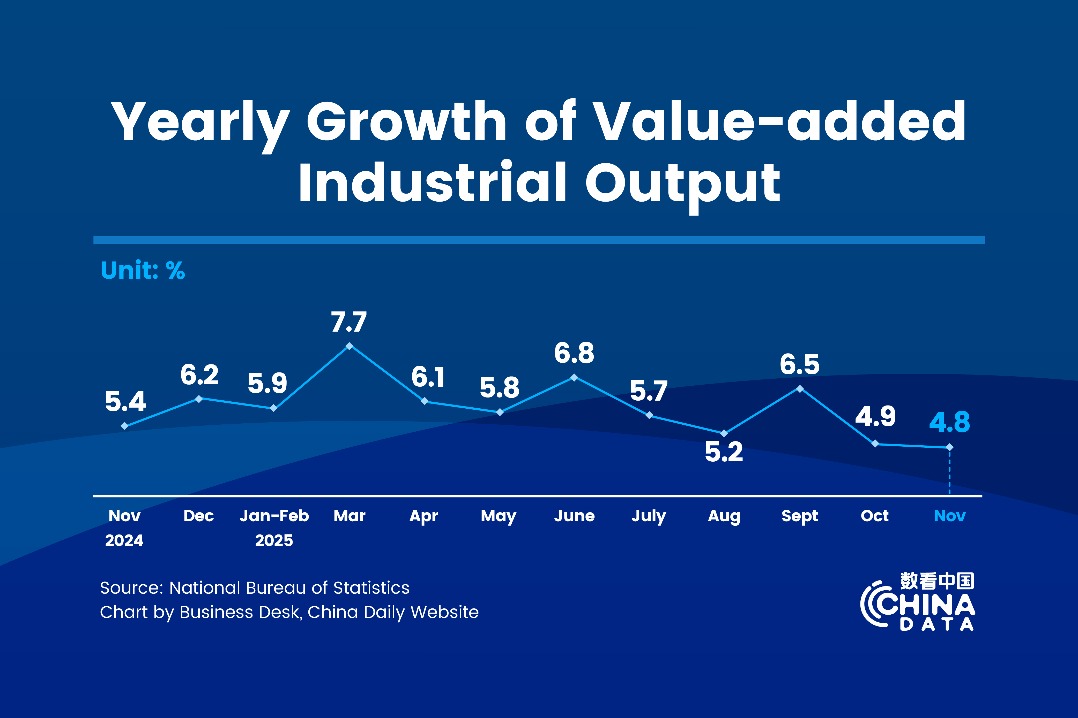Services sector is key to maintaining job growth in the long run


Reviewing China's employment data in the first three quarters, 10.97 million new jobs had been created in cities and towns, meaning that 99.7 percent of the annual target had been achieved, which slightly slipped from 11 million new jobs in the same period last year.
In general, employment in the manufacturing sector may be under pressure due to the downward economic cycle, but the overall employment situation in China remains stable.
Since 2010, China's economic growth has been slowing, but it did not increase unemployment. US economist Arthur Okun propounded a theory in the 1960s that the relationship between unemployment and GDP growth rate varies by country. It means higher growth reduces unemployment, while lower growth can make more people lose jobs.
But clearly, that didn't happen in China. The contradiction between the current slowdown and the continuous improvement in the employment level is obviously not in line with the "Okun's Law".
Let's look at the steady increase of new jobs in the urban areas. In theory, during an economic downturn, the unemployment rate will rise because of weaker demand and lower capacity utilization.
But the truth is, in China, instead of seeing any signs of deterioration in the level of domestic employment, the government raised the target of new employment in the urban areas from 9 million to 10 million in 2014. It increased it again to 11 million in 2017. According to 2018 economic data, 13.61 million new jobs were created in cities and towns, 100,000 more than the previous year.
Data from the Ministry of Human Resources and Social Security showed that from the fourth quarter of 2011, the supply-demand relationship in China's labor market has been reversed, and the supply could not meet the demand any longer.
According to Okun's Law, the relationship between the unemployment ratio and the GDP growth rate is this: when unemployment increases by 1 percent higher than the natural rate of unemployment, the real GDP will fall by 2 percent lower than the potential GDP, or the "output gap".
Therefore, if the potential GDP growth rate of a country does not change in the short term, the size of the output gap is directly determined by the real GDP growth rate, which also determines the employment level of the country to a large extent. However, if the potential GDP growth changes, the situation will become more complex.
Thanks to the great contribution of the vigorous services sector in the past few years, an important feature of China's economic development has been the structural reform and industrial transformation and upgrading. The driving forces of economic growth are shifting from exports and investment to consumption, along with the rising share of the services sector.
In 2013, the share of the services sector exceeded the manufacturing sector for the first time, and then exceeded 50 percent for the first time in 2015. As of the first three quarters of this year, the proportion of services had exceeded 54 percent. While the proportion of services has increased, the labor force of the whole society has also been flowing into the services sector.
From 2012 to 2018, labor in the services sector accounted for 46.3 percent of the total amount, up by 10.2 percentage points, but the proportion of labor in the secondary industry (including the industrial sector and the construction sector) decreased by 2.7 percentage points to 27.6 percent in the same period.
So, we believe that the slowdown in economic growth and the stability of the employment market in China are largely attributable to the vigorous development of the services sector in the process of economic transformation in recent years.
Compared with manufacturing, services are labor-intensive. Especially in the initial stage of the economic transformation, the relatively low-end consumer service industry (related to food, clothing, housing and transportation) developed fast, and the features of its labor-intensive nature were more obvious.
The development of the labor-intensive services sector will bring two results: on the one hand, effects of absorbing the surplus labor force are obvious. Even when the surplus labor force is exhausted, there is a situation of competing for labor with manufacturing, resulting in the labor flows from manufacturing to services.
On the other hand, compared with capital-and technology-intensive industries, the labor-intensive services sector always has lower productivity, which will average down the potential growth rate of the whole economy. And this effect will gradually increase along with the expansion of the services sector's share.
China will maintain medium to high economic growth in the future. For, in the process of economic transformation, the central line of China's potential economic growth rate may continue to drop, due to the continuous increase of the proportion of the services sector.
If the government still hopes to maintain the real GDP growth rate at a relatively high level, through the counter-cyclical adjustments of monetary and fiscal policies, it will lead to higher inflation and asset price bubbles.
On the contrary, if the goal of monetary and fiscal policies is to drive the growth rate of real GDP closer to the potential growth rate, the real GDP may remain at a relatively low level, or even continue to decline.
In fact, we have seen that the government will focus more on promoting the structural reforms in the future to improve the quality of economic growth. At the same time, for making the macroeconomic policies, both monetary and fiscal policies should be targeted and more attention should be paid to their effectiveness, while avoiding a deluge of strong stimulus policies.
So, do we need to worry that in the process of transformation, the continuous expansion of the services sector's proportion will endlessly pull down the potential economic growth rate? The answer is "not necessarily".
A large number of studies showed that, in fact, the proportion of labor force in the services sector and the proportion of outputs of service businesses are not necessarily linear with the real GDP growth.
After reaching a certain point in time, the services sector can accelerate economic growth, so it shows a "U-type" relationship between the proportion of the services sector and the economic growth rate, especially when the services sector is the intermediate input of production.
In view of the rapid development of the consumer service industry related to the daily "food, clothing, housing and transportation" of residents during the transformation process, the overall labor productivity of the services sector has declined. But at present, the services sector's production-oriented segments such as finance, communications and business services have also begun to speed up.
These production-oriented segments not only have a large growth space of their own labor productivity but as intermediate inputs of the manufacturing sector, the improvement of their labor productivity will directly promote the improvement of manufacturing labor productivity.
If the development of production-oriented services segments is fully developed in the future, China's economic growth will maintain a medium to high growth in the long run after the current slowdown is ridden out.
The author is managing director and chief economist of Morgan Stanley Huaxin Securities.




































